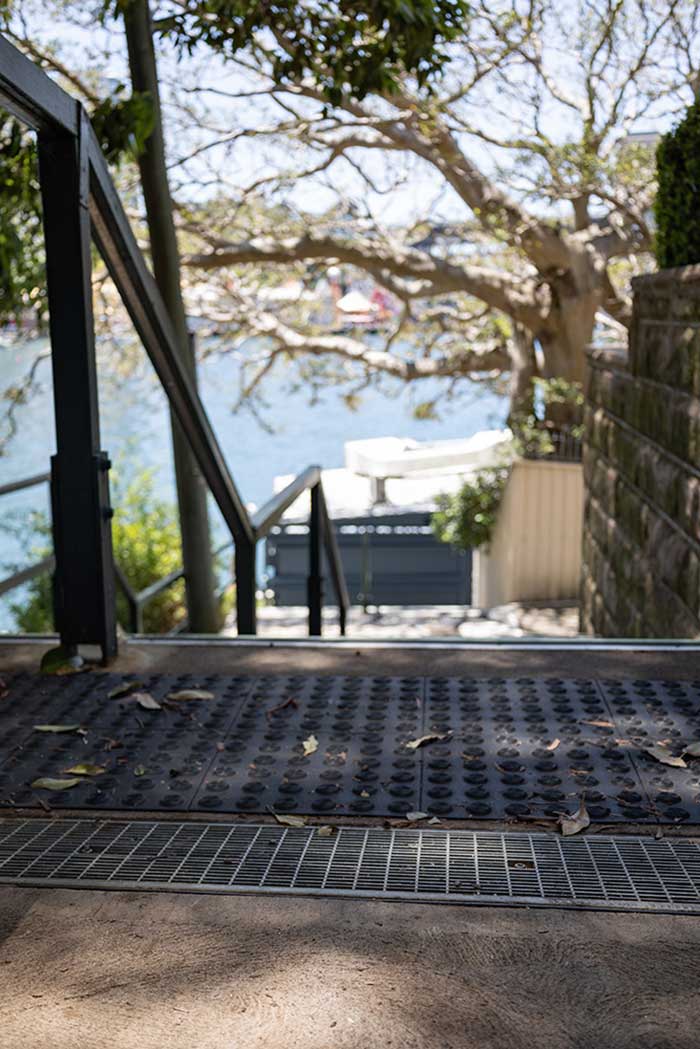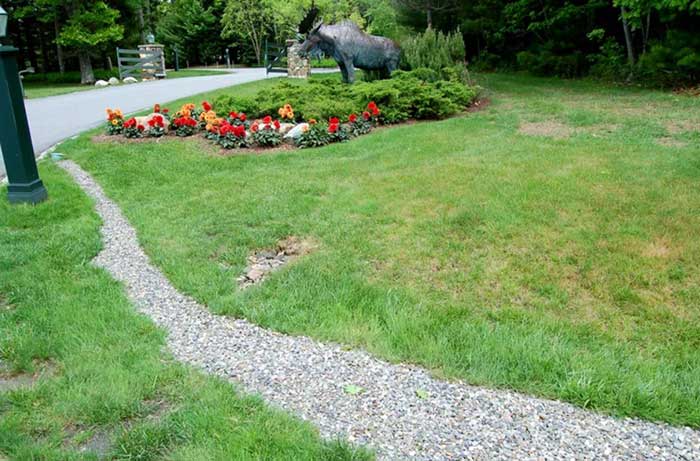When it comes to choosing the appropriate trench drain for your project, navigating your way through the many options can be overwhelming. In this blog post, we’ll explain everything you need to know about trench drainage systems.
What is a trench drain?
A trench drain system is a linear drainage system used to remove excess surface water from an area through a channel and grate. Without a drain, water can pool, potentially leading to damage to building foundations, driveways, and other structures.
How do trench drains work?
Linear drains rely on gravity to remove water from where it pools. When thinking about installing a drainage system, the run length, slope and sizing need to be discussed with your installer or designer.
Benefits of trench drain systems
The most significant and obvious benefit of a trench drain is how it quickly and easily channels water away from certain areas of the landscape. A properly integrated trench drain will receive water from other areas in the landscape. To achieve proper integration of a trench drain, a landscape’s natural slope should lead water to the trench drain’s location, or a drainage system that concludes with water channelled into the trench drain.
Either way, the trench drain helps eliminate standing water by providing a means to remove it from the area, preventing water damage to houses, increasing safety and more. (Source: Jonite)
In other cases, a drain can also increase safety. For areas such as pool decks, footpaths and patios, removing water quickly reduces slipping hazards. Having trench drains alongside public roads reduces the risk of hydroplaning.

Trench drain installed on stairs for safety
Trench drain terminology
As you explore different options, you may find certain terms used interchangeably. This includes names such as ‘trench drain’, ‘channel drain’, ‘line drain’, or ‘grated drainage channel’. Each of these terms describes a trench drainage system – a system that removes water via a trough or channel with removable grates.
Difference between a trench drain and French drain
Trench drains are often confused with another type of common drains – the French drains. While similar, there are a few major differences that should be considered when choosing between these drain types.
A French drain is a subsurface drain, unlike the surface-level trench drain. It helps drain excess water in the oversaturated ground, making them useful in yards that rarely flood, but face excess water during occasional rain events. They can help prevent serious and structural damage to the house.
The effectiveness of a French drain depends on the slope of the ground and the drain position. Their purpose is not to quickly move large amounts of water off the landscape. Therefore, a French drain might work in a landscape with a low slope that receives a small amount of water, but a trench drain might be better for a landscape with a steeper slope that receives more water.
Installation is also a factor. French drains consist of a liner and perforated pipe installed in a trench. The pipe is then covered with gravel, making them more difficult to install than a trench drain. (Source: Jonite)

Source: The Spruce
Channel materials
Trench drainage channels come in a variety of materials. Two main types include the concrete/polymer trench drain and polypropylene, which is what SABdrain channels are made out of.
There are many benefits to choosing a polypropylene trench drain. When compared to a polymer/ concrete channel, SABdrain channels are lighter and easier to install, and have a quicker flow rate as well as more strength than your standard polymer concrete channel.
Grating options
No matter what channel you chose, your new linear trench drain will require a grate covering. Grate options include but are not limited to cast iron, galvanised steel, stainless steel and even stone.
The grate you choose depends on water volume, safety requirements and the location where it will be installed.
Firstly, the weight of anything running over the grate needs to be taken into consideration.
Location of the grate such as proximity to chlorine water/ salt water/ coastal areas determines the type of grates that can be utilised in that environment.
Other elements such as water volume and sizing need to be discussed with your plumber/installer as this differs between situations.
Trench drain accessories
There are a few accessories you may come across when researching your options for drainage. Most accessories help with installation or pipe attachment whilst others are for locking down the grate to the channel.
These include:
- End Caps/End Stops
- End Cap Outlets
- Sprigot Offtakes
- Debris Baskets
- Install Clips
Money invested in a trench drainage system is not money down the drain
A trench drainage system is an investment, and can save money and trouble in the long run. Investing in a drainage system can protect areas from serious and expensive water damage. Choosing the correct and most cost-effective trench drainage system for your needs maximises the return on your investment.
Contact us today if you require further help with selecting a drain or to request a quote.

